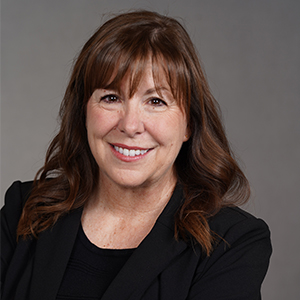Editor in Chief Sarah Wheeler sat down with Scot Rose, CIO at Class Valuation, to talk about innovation in the appraisal space and how the technology being deployed for appraisal modernization can actually protect appraisers. This interview has been edited for length and clarity.
Sarah Wheeler: You’re the chief innovation officer at an appraisal firm, and the appraisal space has not always been known for tech innovation. What’s changing there?
Scot Rose: Technology has been a bit slow going in our space, but it’s really ramped up over the last three to four years. And for some, it’s scary because they don’t like change, but I think not embracing it is where the true risk comes into play — for both an organization and the profession overall.
I had a conversation last week with a colleague who’s been in the technology space for over three decades and he mentioned that when first started in the profession people would ask him: “Help us understand where technology is going to be in the next five to 10 years” And his comment to me was, if you think you can think five to 10 years in advance today, you’re completely lying — it’s impossible. It’s moving so much faster than ever before. And generative AI is probably the best example of that.
Another example is the LIDAR that’s now available on iPhones, which adds a whole other dynamic to developing point cloud technology to gather measurements and spatial information about anything that you’re scanning.
SW: How is Class Valuation leveraging AI?
SR: We’ve leveraged AI for years. Today, we use AI, we use computer vision to understand spatial aspects of the home with our property data collection solution. You can now glean condition and quality information through image recognition. Instead of a human with a tape measure or laser device, we’re using technologies and AI to get fully detailed floor plans of the interior of the home and it’s also three dimensional. So, we can do 3D models and understand the volume of space instead of just two-dimensional components of that space.
We also use AI to help run our operations and drive operational efficiency by using predictive analytics and how we assign appraisals to appraisers. And we use AI in our DataMaster solution to do market analysis and support appraisers in how they’re developing appraisal reports.
And quite frankly, I think that’s probably an area where we’re going to see the most advancement over the next two to three years — in appraisal development.
SW: How do you think about technology and prioritizing what to do next?
SR: Years ago, our trademark was “thoughtful change” and that’s how we started this mission of appraisal modernization. As we’re implementing technology, we always try to think of things that are going to improve the experience for all stakeholders: homeowners, real estate agents, investors, rating agencies, appraisers, loan officers, mortgage brokers. Everybody is affected by the appraisal process.
One area where there’s been a challenge for adoption of appraisal modernization has actually been in the real estate agent space. And I think that’s because they weren’t communicated with upfront around all the things that everyone was working on around appraisal modernization. So, when it hits their desk for the first time, they’re like, ‘What do you mean, the appraiser is not coming to the property on my transaction?’ And in the market right now, where every transaction is so important to them, if you introduce something that’s strange and new, you get more hesitancy.
SW: How is technology changing appraisals?
SR: We’re creating a path with technology to de-friction the whole process around purchasing a home — not only to ensure we don’t have a capacity issue in the future, but also to take things potentially down from hours of time waiting for an appraisal report to potentially having them done instantaneously.
If we’re collecting the data upfront at point of list to support these processes that are now available, like IBW, inspection based waivers, or desktop appraisals — which the GSEs have rolled out in the last year — an appraiser can do an appraisal in a matter of hours. And the result is a more accurate appraisal because it’s more independent and appraisers have to base their opinions off the data being provided.
SW: Appraisals have been under a microscope last few years, and tech plays a big role in how the agencies and regulators want to change things. How is Class Valuation rising to that challenge?
SR: Class has really been a driver of this change. We have a ton of appraisers inside of class. And we didn’t think it was fair for them to have to try to develop opinions off of a PDF — it’s a bunch of textual information and two-dimensional images. We needed to bring the property to them and with our 3D technology we can do that.
And then we have also tried to work very closely around these issues with appraisal bias that came up secondarily, after we’d already started these modernization initiatives. We were recognized as a spotlight innovator by the Brookings Institute and ASHOKA in the Changemakers Challenge: Valuing Homes in Black Communities. And I think the reason is they saw the value of separating the appraiser from the interaction with the homeowner and with the real estate agents and with others.
Secondly, they saw the value of full transparency. I spent six years on the Board of Real Estate Appraisers in Colorado right after the housing crisis. And 99.9% of the time when an appraiser got in trouble, it was for misrepresentation of the subject property, because in order to manipulate an outcome around the comps, they couldn’t show everything about the property as it was in reality — they just showed the pictures they wanted to show. Now, we’re giving a fully transparent data package to the appraiser that they have to use to develop their opinions. You can’t manipulate that.
The next step is going to be around the development of the appraisal and the data used to generate the opinion of value. We’ll be able to provide similar levels of transparency and support for those opinions around the data that was analyzed and utilized to support the opinion of value.
SW: You are an appraiser and you’ve been a chief valuation officer. At what point did the tech part come in for you?
I put myself through school as an appraiser, where I was studying computer science and applied mathematics. But I was a senior in college during the dot-com bust and there were no jobs to get coming out of college during that time. So I continued to appraise for a while and then I joined a firm in Boulder as a staff appraiser to do due diligence on their loan level reviews. But I quickly got more into the modeling side of things and more into the analytics.
I’ve always kind of looked at processes and operations with this more analytical and computer science background to figure out ways we could use technology to improve that process — to make it more efficient, to create more quality outcomes. My job at Class is the perfect role for me to take the two worlds and combine them together. I always think of what we do as a technology-based service offering, And that’s the way I think about the appraiser process as well: let’s not replace the appraiser, let’s empower them to use tools so they don’t get replaced.
SW: What keeps you up at night?
SR: It’s finding a way to really help the appraiser population see the value in adopting technology versus being so resistant. I’m an appraiser and our business is 100% dependent on appraisers being relevant. Appraisers are analysts who really understand market data — that’s where the appraiser’s highest and best use is. So many people take this protectionist view: they’re so worried about change that they lose sight of adopting these tools in the right way. That’s what’s actually going to protect you from risk inside of the profession.
The important thing is recognizing that you have to leverage these new tools and bring more credibility and relevancy to our profession. Otherwise, people will start looking for alternatives. And that’s when we do have to worry about generative AI and all these other tools coming in and potentially replacing us as a group. And that won’t happen if we leverage these tools and stay relevant with utilizing them to create better results for everybody involved in the ecosystem.






